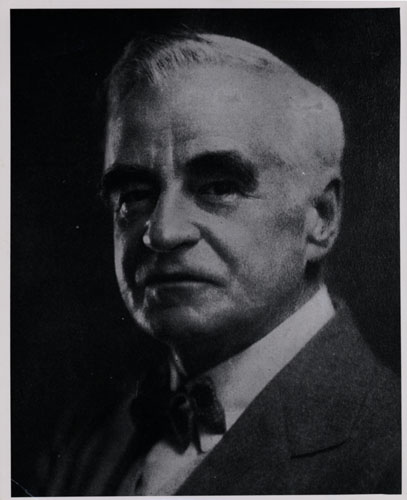William Francis Ganong
1864-1941
William Francis Ganong (historian and professor) was born 19 February 1864 in Carleton (West Saint John), New Brunswick When Ganong was nine, the family moved to St. Stephen where Ganong's father and his brother established the successful Ganong Brothers chocolate making company. Ganong was educated at the St. Stephen public school and went back to Saint John for his last year, where he graduated with the Parker Medal for mathematics. In the fall of 1881, Ganong enrolled in a three-year course in Natural Science at the University of New Brunswick (UNB) where he received a BA in Natural Sciences with honours in 1884. By January of 1885, Ganong had earned a grammar school licence from the province. He taught school in St. Stephen and then moved to the US to attend Harvard University. After graduating, he became an assistant instructor of Botany at Harvard and was promoted to Botany instructor in 1889. He kept the post until 1893, when he went to Munich, Germany to study and earn a PhD. When Ganong returned to North America, he was appointed as the first professor of Botany and director of the Botanic Garden at Smith College in Northampton, Massachusetts. He wrote the books The Teaching Botanist (1899), A Laboratory Course in Plant Physiology (1901), The Living Plant (1913), and A Textbook of Botany for the Colleges (1916). In 1932, Ganong retired from Smith but continued to write papers, essays, and books. Ganong became involved with the New Brunswick Natural History Society (NHS) in the summer of 1883. He wrote many papers for the society and in 1915, received an honorary life membership for contributing over one-third of the total material for the NHS. Together with John C. Webster, Ganong helped to establish the New Brunswick Provincial Museum in Saint John in 1934. In 1931, the Royal Society of Canada awarded Ganong the Tyrrell Medal in recognition of his outstanding scholarship. Ganong died on 7 September 1941.
Kofahl, Mike. “William Francis Ganong” New Brunswick Literary Encyclopedia, Winter 2009. Accessed 19 April 2023
Archival Material
-
Dr. William Francis Ganong Collection
⌄Date Range of Material1720-1961, predominant 1880-1939Extent
9.78 metres
Scope and Content NoteThe fonds consists of professional and personal correspondence of William Francis Ganong and his family. Ganong's research notes, notebooks and scrapbooks, which cover a wide range of topics from the historical, botany, physiography, cartography, nomenclature, natural history etc. with a strong emphasis on New Brunswick and to a lesser extent Nova Scotia, Maine, and Quebec. There is also correspondence and research material of other scholars including Fannie Eckstorm (Maine; John Clareence Webster (New Brunswick) and L.W. Bailey (New Brunswick). The fonds includes the professional and personal documents of the Carman family of Fredericton, Ganong's first wife's relatives. Ganong also collected original documents from the 18th and 19th century for New Brunswick. The fonds consists of seven series: Correspondence; Research Documents; Societies and Organizations; Ephemeral; Bailey; Carman Family; and Historical Documents. See also W.F. Ganong Photograph Collection (1870s-1933), consisting of 820 loose photographs and nine photograph albums containing an additional 1,053 images, constitutes a unique record of late 19th and early 20th century New Brunswick. In contrast to the work of contemporary professional photographers - whose financial concerns necessarily limited the scope of their art to scenes which were thought marketable - Ganong's images, and those commissioned by him, capture many out-of-the-way places perhaps never before, and seldom since, photographed. The quality of the surviving images is, for the most part, excellent and they will undoubtedly prove a remarkable resource for visual history, natural history, geography and ethnology.

William Francis Ganong
"William Francis Ganong." Courtesy of Archives & Special Collections, UNB Libraries. UA RG 433, Series 1, file 3, item 48, [193-?]. Accessed 9 June 2023.

See the New Brunswick Literary Encyclopedia entry.